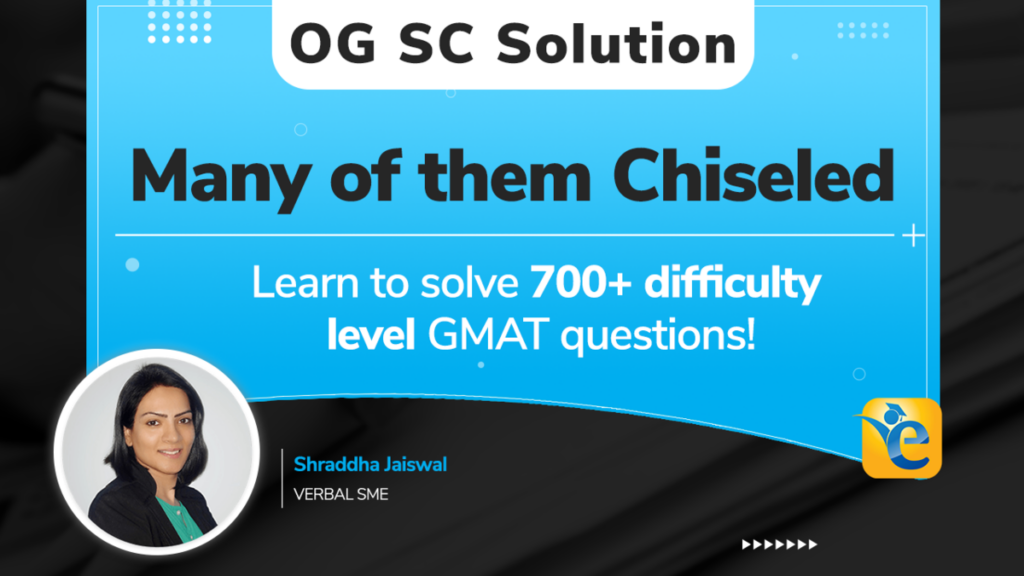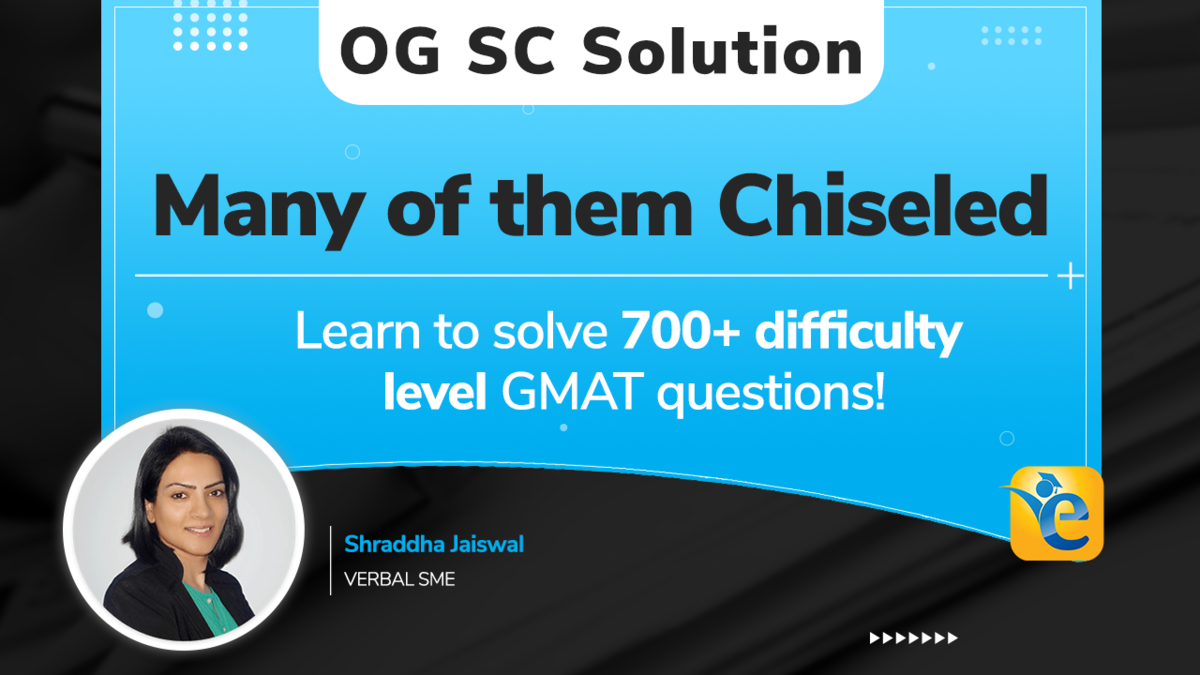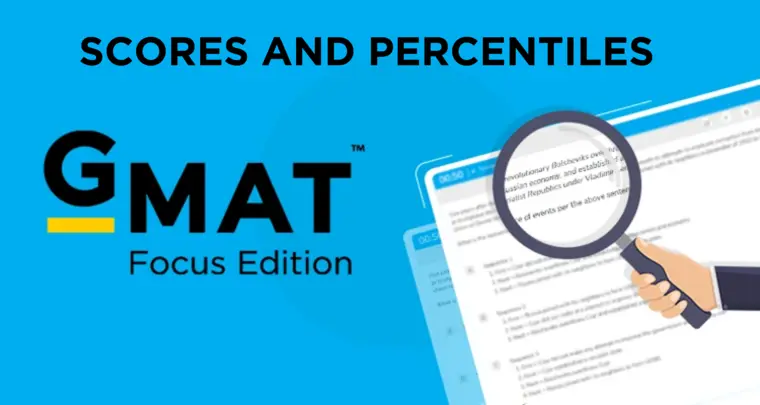In this article, we’ll look at the solution to the 700-level GMAT Official Guide Sentence Correction question. “SC61561.01- Many of them chiseled from solid rock centuries ago…”.
Here is some general information about this OG question – Many of them chiseled from solid rock centuries ago, the mountainous regions of northern Ethiopia are dotted with hundreds of monasteries.
- SC61561.01
- Difficulty level – Hard
- Most popular incorrect choice: D
- Question Type: Modifiers
- 1. Official Guide Question – SC61561.01- Many of them chiseled from solid rock centuries ago…
- 2. OG Video Solution- SC61561.01- Many of them chiseled from solid rock centuries ago…
- 3. Understanding the “Real Picture”
- 4. Connection Error
- 5. Choice E – Perfect Placement of Pieces
- 6. Choice D –A Bad Fit
- 7. Piece It All Together
- 8. “Which” and “Them” – Both Fit In
- 9. Practice Question
1. Official Guide Question – SC61561.01- Many of them chiseled from solid rock centuries ago…
SC61561.01- Many of them chiseled from solid rock centuries ago, the mountainous regions of northern Ethiopia are dotted with hundreds of monasteries.
[Refer to the Official Guide for options]
I am sure all of you have solved a jigsaw puzzle at some point in your life. Puzzles challenge our faculties well to make them sharper and are simultaneously fun, right? But why are we talking about jigsaw puzzles here? Keep reading to find out.

2. OG Video Solution- SC61561.01- Many of them chiseled from solid rock centuries ago…
3. Understanding the “Real Picture”

This sentence has a pretty simple structure. It starts by saying that many “them” were chiseled or carved out with the help of chisels and hammers hundreds of years ago. Once we are done reading this part of the sentence, we organically expect that now we will read about “them.” The mystery will be unveiled now.
The next part of the sentence talks about the mountainous regions of northern Ethiopia. These regions have many monasteries. So, the sentence says that these mountainous regions were CHISELED out of one humongous block of rock.
Let’s just visualize what we read just now. Some people carved out mountainous regions using chisels and hammers on this massive block of rock. Since when did humans start carving out mountainous regions? I don’t remember my high-school geography book mentioning artificial mountainous regions. This sentence is totally illogical.
So, shall we look at the answer choices for help with logic? Nope. Did you know that everything we need to understand the logic of the sentence is present in the original sentence? I am sure most of you understand that “monasteries” are the only entity in the sentence that are carved out using chisels and hammers. So, carving out the sentence’s intended meaning here is easy with the help of the chisel of our logic.
4. Connection Error
I know you are ready to go through the answer choices to make your selection. But let’s spend a few more seconds on the original sentence to see if we can guess how the correct answer choice should be worded.
We understand that the original sentence is incorrect because the sentence presents illogical meaning. The question is what is the culprit? Most definitely, the modifier that is sitting right at the beginning of the sentence. Because it is so close to “mountainous regions,” it appears that “them” = “mountainous regions.”
If I think of the placement of this modifier in terms of a jigsaw puzzle, our pieces will look like this:
![GMAT Official guide question - Many of them chiseled... [Placement of modifiers]](https://cdn.e-gmat.com/blogs/wp-content/uploads/2021/12/placement-of-modifiers-most-of-them-chiseled-300x174.png)
A little lesson on puzzle pieces. The protruding parts of a puzzle piece are called the knobs, and the depressed part are called blanks. The knobs are meant to fit into the blanks. That’s how the puzzles pictures are cut into various pieces. But, in this sentence, the connection is certainly wrong.
So, let’s just change the placement of this modifier and put it right at the end of the sentence after “monasteries.”
The mountainous regions of northern Ethiopia are dotted with hundreds of monasteries, many of them chiseled from solid rock centuries ago.
Does this change make the sentence logical? Bingo! All we need to do is to place the opening modifier at the correct place, just as we would move a puzzle piece to its proper position to get an accurate picture.
![GMAT Official guide solution - Many of them chiseled... [Placement of modifiers]](https://cdn.e-gmat.com/blogs/wp-content/uploads/2021/12/most-of-them-chiseled-placement-of-modifiers-300x214.png)
The difference is that while solving a jigsaw puzzle, we pay attention to the visual clues and connect the right pieces based on visual correctness. In GMAT SC, we use logical clues to move various entities in the sentence to get the logically and grammatically correct version.
5. Choice E – Perfect Placement of Pieces
Choice C: The mountainous regions of northern Ethiopia are dotted with hundreds of monasteries, many of them chiseled from solid rock centuries ago.
Bull’s eye. This is exactly what we wanted. How correct we were in our guess work. Choice E simply moves the modifier to the right place and breathes all the sense into the sentence by plugging the knob into the blank. Puzzle-solving skills indeed prove handy while solving GMAT SC sentences.
Just a word of caution. With this sentence, we were able to pre-think or guess the exact verbiage of the correct answer choice. However, this is certainly not the case with all the SC problems. In sentences with complex structure, it is difficult to pre-think the exact phrasing of the correct answer choice. As long as you are able to understand the logic of the sentence, you are good to move on to scanning the sentence grammatically.
6. Choice D –A Bad Fit
Choice D: The mountainous regions of northern Ethiopia are dotted with hundreds of monasteries, many of which are chiseled from solid rock centuries ago.
I must say this Choice is very craftily chiseled. I am not surprised that this choice is so loved. Many get lured to Choice D because of the structure, “many of which are chiseled.” This structure is neat indeed, with a nice SV pair sitting there. The sheen of this structure dazzles our eyes so much that we miss the verb tense error in this choice and try to fit a wrong piece at the wrong place. We cannot use the simple present tense verb for an action that took place hundreds of years ago.
7. Piece It All Together
Let’s now witness how this question can be solved easily only by applying logic. I am not going to call upon grammatical concepts for help here.
A. Many of them chiseled from solid rock centuries ago, the mountainous regions of northern Ethiopia are dotted with hundreds of monasteries.
B. Chiseled from solid rock centuries ago, the mountainous regions of northern Ethiopia are dotted with many hundreds of monasteries.
The first two answer choices say that mountainous regions are chiseled from solid rock. Knob to Knob OR Illogical. Reject.
C. Hundreds of monasteries, many of them chiseled from solid rock centuries ago, are dotting the mountainous regions of northern Ethiopia.
D. The mountainous regions of northern Ethiopia are dotted with hundreds of monasteries, many of which are chiseled from solid rock centuries ago.
Choices C & D suffer from the onslaught of incorrect verb tenses. In Choice C, “are dotting” presents an illogical meaning. If the monasteries were chiseled hundreds of years ago, how are they appearing in the mountainous regions now? Where were these monasteries all this while? Bad piece.
Choice D again uses the simple present tense verb “are chiseled“, suggesting that the action occurs periodically. But the sentence clearly mentions that these monasteries were chiseled hundreds of years ago. Another bad combination.
E. The mountainous regions of northern Ethiopia are dotted with hundreds of monasteries, many of them chiseled from solid rock centuries ago.
Perfecto.
8. “Which” and “Them” – Both Fit In
Choices D and E both use the correct structure. While Choice D uses a dependent clause to describe the preceding noun “hundreds of monasteries,” Choice E uses a simple noun modifier to do the same job. Both “which” and “them” correctly describe the logical entity they should describe. So, please do not put these two structures against each other in a dual and expect one of them to be victorious.
9. Practice Question
Want more practice in such questions? Try your hand at this question to understand the importance of the precise placement of modifiers.
You may also review our very famous article on Noun + Noun Modifiers here.
Hope this helps.
Thanks.
Shraddha
Planning to take the GMAT? We can give you access to quality online content to prepare. We are the most reviewed GMAT prep company on the GMAT club with more than 2200+ reviews and have delivered 10x 700+ scores than the average GMATClub partner. Why don’t you take a free trial and judge it for yourself? Write to us at acethegmat@e-gmat.com in case of any queries.















